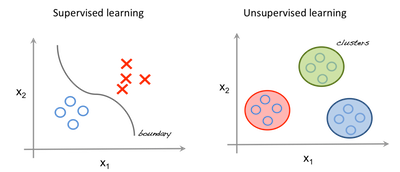Unsupervised Learning
Definition
Unsupervised learning is a type of machine learning where an algorithm learns from and makes predictions based on unlabelled data.
Explain Like I'm 5
Imagine you're given a basket of fruits but nobody tells you which fruit is which. You start sorting them based on their characteristics like color, shape, or size. That's what unsupervised learning does; it sorts out data without any prior information about it.
Visual Aid

Digging Deeper
Unsupervised learning algorithms discover patterns in data sets containing data points that are neither classified nor labeled. The most common unsupervised learning method is cluster analysis, which is used for exploratory data analysis to find hidden patterns or grouping in data. For instance, K-means clustering algorithm assigns each point to a cluster by minimizing the distance between the point and the centroid of the clusters.
Unlike supervised learning that predicts a label, unsupervised learning identifies commonalities in the data and reacts based on the presence or absence of such commonalities in each new piece of data.
Applications
- Market Segmentation: Unsupervised learning can be used to identify customer segments in marketing based on purchasing behavior.
- Anomaly Detection: In credit card fraud detection, it can identify unusual patterns or behaviors.
- Recommendation Systems: Websites like Netflix or Amazon use it to recommend products or movies based on user's past behavior.
- Natural Language Processing (NLP): It is used for topic extraction and sentiment analysis.
- Image Recognition: For example, Google Photos uses it to group similar looking photos together.
Learn More
Beginner-friendly video on Unsupervised Learning
In-depth technical resource on Unsupervised Learning